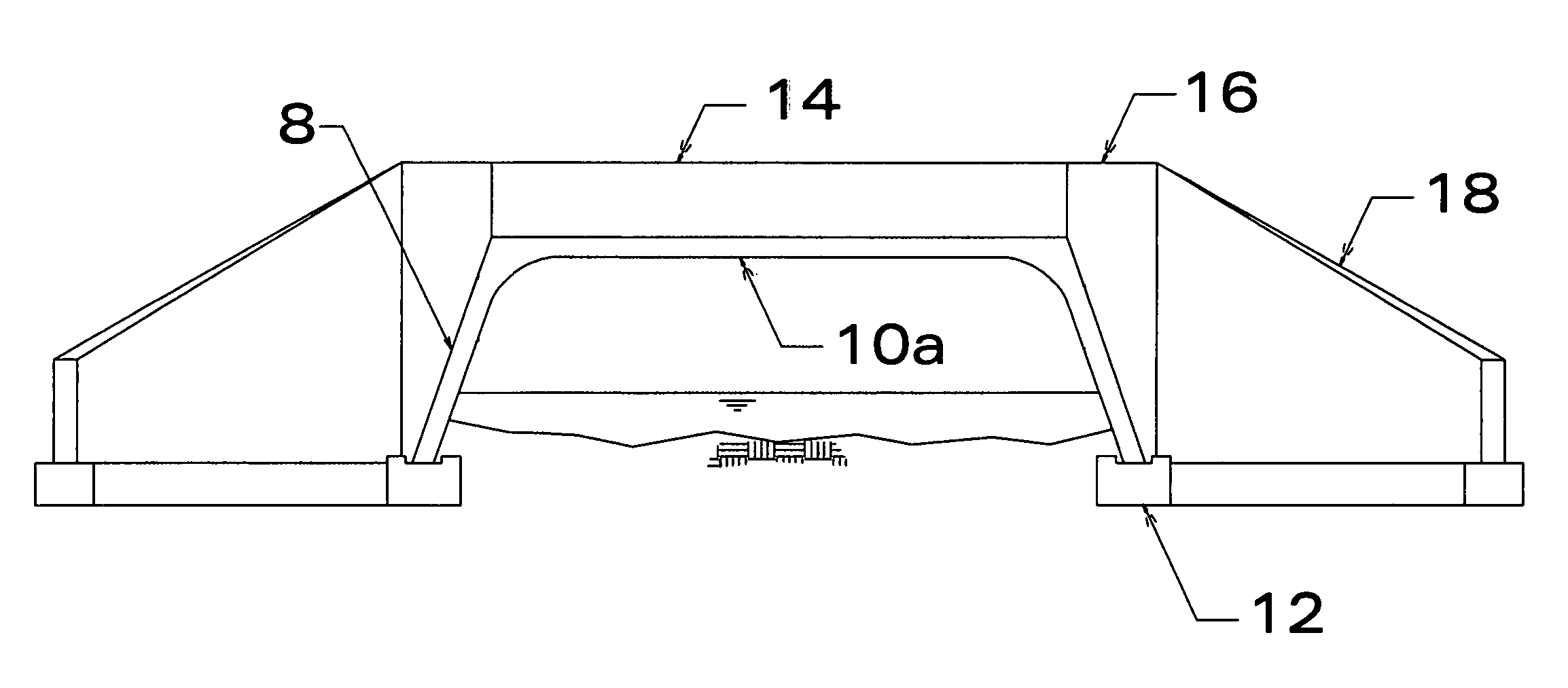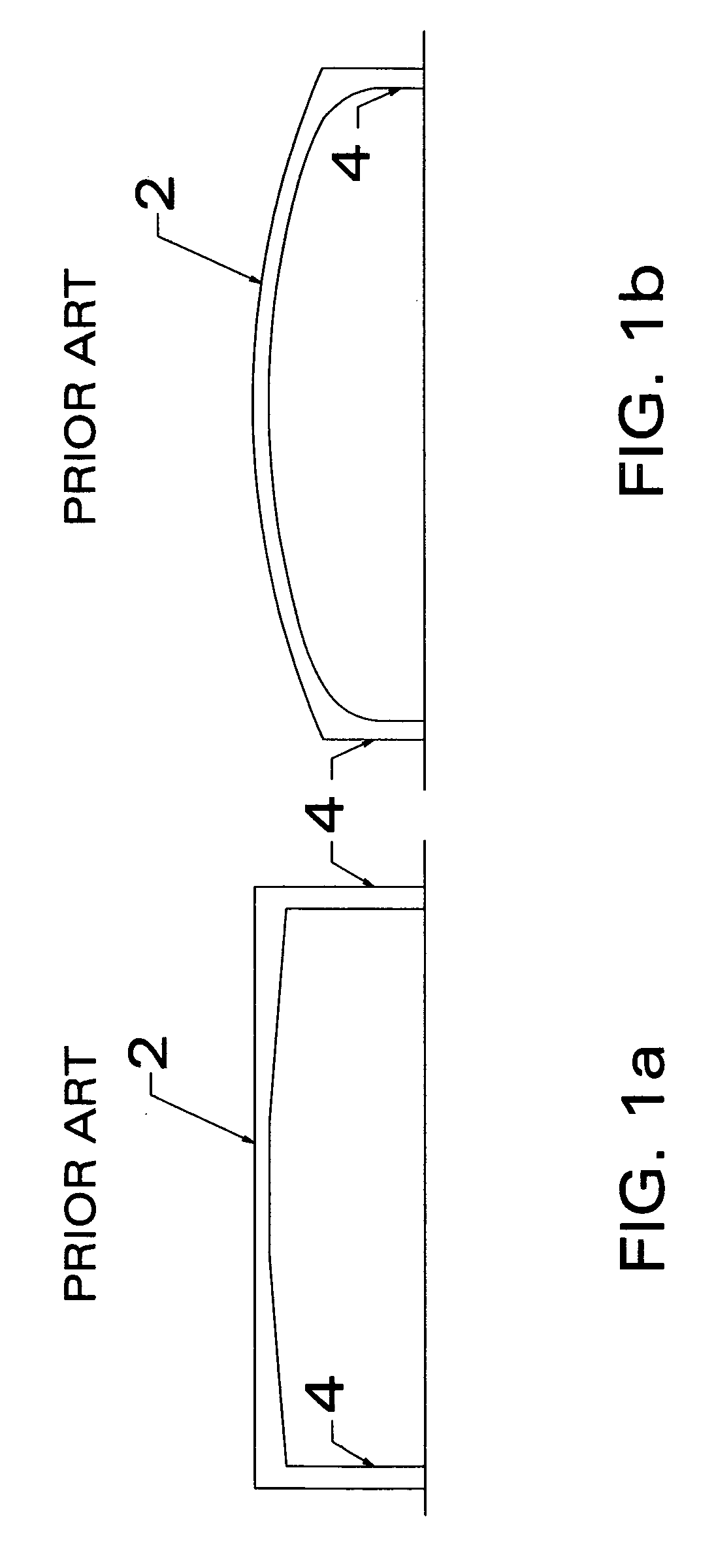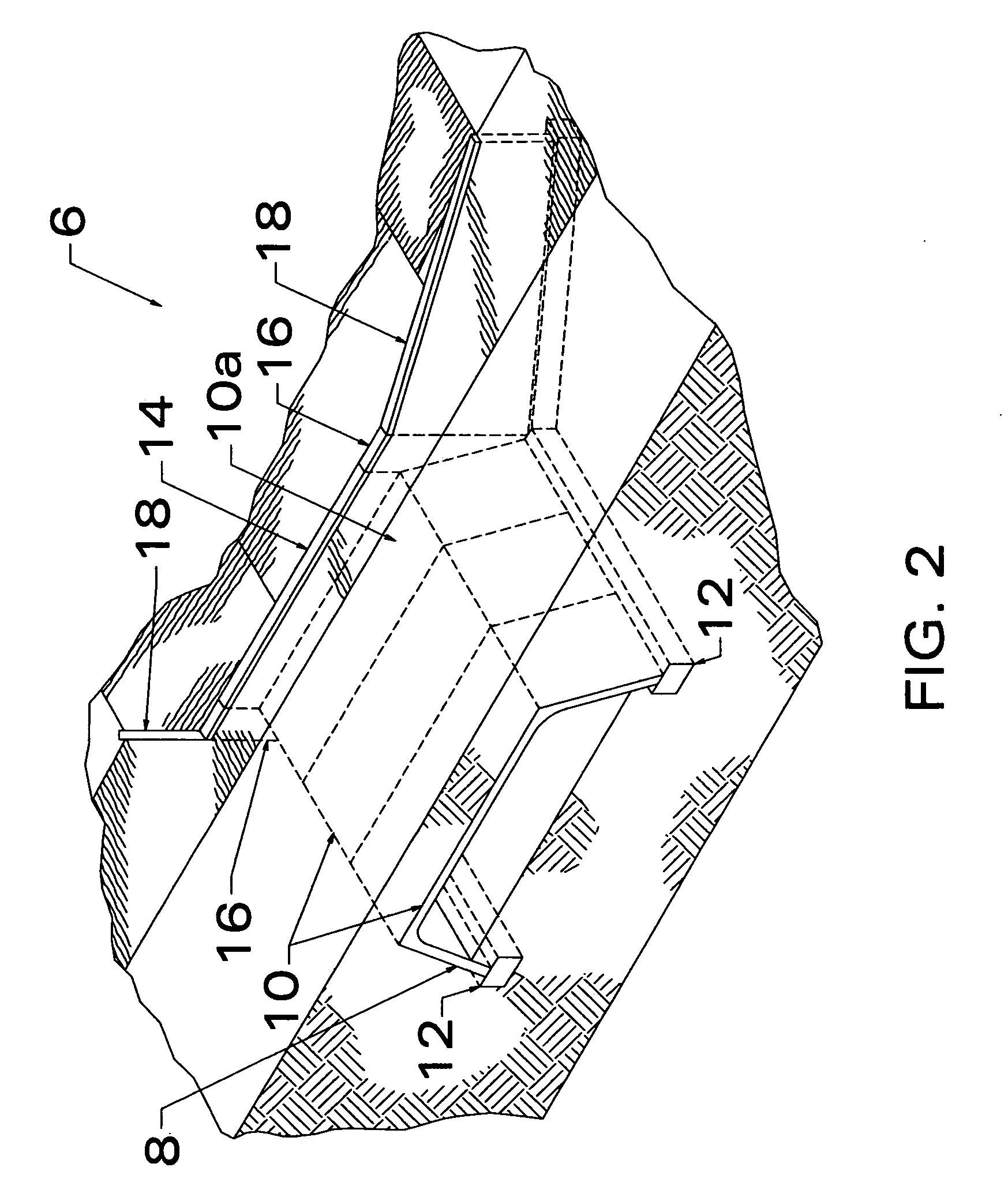Flared leg precast concrete bridge system
a precast concrete and bridge technology, applied in bridges, bridge structural details, sewer pipelines, etc., can solve the problems of difficult production driven environment, high production cost, and inability to meet the needs of construction, so as to reduce the effective span of the resulting structure, reduce the bending moment, and minimize the production set-up and stripping (form removal) time
- Summary
- Abstract
- Description
- Claims
- Application Information
AI Technical Summary
Benefits of technology
Problems solved by technology
Method used
Image
Examples
Embodiment Construction
[0024]FIGS. 2, 6 illustrate a preferred embodiment bridge assembly 6 constructed by way of the present invention system. FIGS. 3, 4 and 5 depict preferred embodiment precast sections used in the construction of bridge assembly 6. As shown by these figures, bridge 6 comprises a series of precast elemental concrete sections 10 that are placed in face-to-face parallel alignment. The leg members 8 of each section sit atop two parallel, continuous concrete strip footers 12 that are formed in trenches and cast into the ground. As shown in FIG. 4 concrete strip footer 12 is cast with recess 13 that is sized to receive bottom portion 31 of leg 8. After placement, leg 8 is locked in-place onto footer 12 with cementitious grout. Depending upon site characteristics or other requirements, strip footers 12 may be connected by a cast-in-place concrete slab (not shown).
[0025]As shown in FIG. 4, legs 8 depend angularly from top slab 15 at an effective flare angle A as measured from the horizontal. ...
PUM
 Login to View More
Login to View More Abstract
Description
Claims
Application Information
 Login to View More
Login to View More - R&D
- Intellectual Property
- Life Sciences
- Materials
- Tech Scout
- Unparalleled Data Quality
- Higher Quality Content
- 60% Fewer Hallucinations
Browse by: Latest US Patents, China's latest patents, Technical Efficacy Thesaurus, Application Domain, Technology Topic, Popular Technical Reports.
© 2025 PatSnap. All rights reserved.Legal|Privacy policy|Modern Slavery Act Transparency Statement|Sitemap|About US| Contact US: help@patsnap.com



